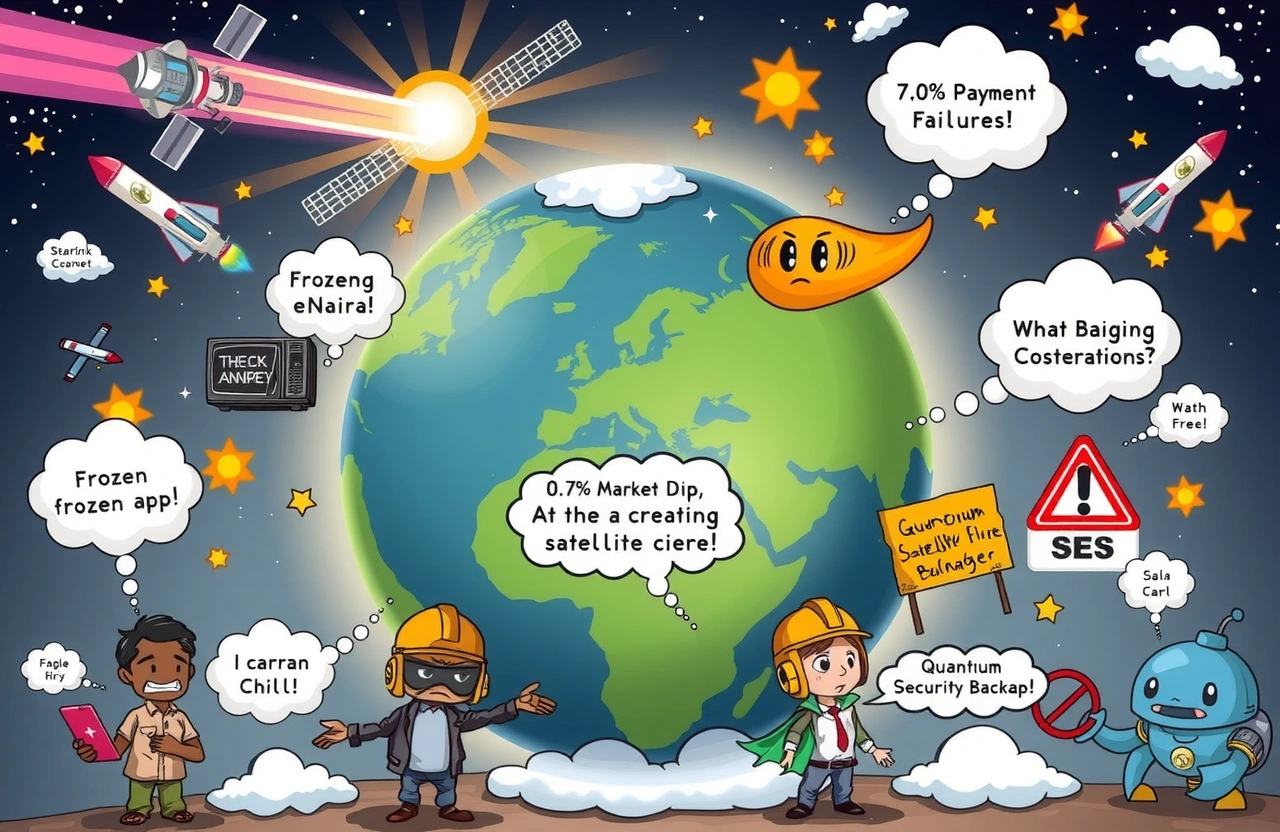The Fintech Frontier in Orbit
When Nigeria’s Access Bank processed remote loans through a SpaceX rocket launch last year, it underscored finance’s grand migration skyward. Across unbanked regions from the Amazon to Zambia, satellite banking bridges connectivity deserts using constellations like Starlink—transforming how billions access capital. While these systems uplift communities overnight, unexpected fragility lurks beneath. Recent disruptions at Chile’s BancoEstado saw 7,000 payment failures during a solar flare, exposing how tightly coupled banking functions have become to orbital switches.
A paradigm shift unfolds as space-enabled institutions replace fiber cables with laser-linked satellites. Financial giants like Barclays and DBS Bank now integrate these self-healing networks into core infrastructure, yet risk engineers scramble to map new-space vulnerability chains. The growing reliance introduces complex interconnections where minor technical failures cascade at planetary scale—your mobile payment might depend on ground station backups in New Zealand supporting African ATMs. Welcome to finance’s high-altitude era.
The Emergence of Satellite Banking Networks
Satellite banking isn’t futuristic fantasy. Tangible innovations already transform rural banking worldwide:
– Peru’s coastal desert communities receive mobile money services via SES Satellite constellations
– In the Philippines, PayMaya drones leverage SpaceX terminals for typhoon-relief cash distribution
– Mongolia’s remote livestock traders finalized cattle payments via Starlink during China’s 2023 network shutdown
How Starlink Became Banking’s Silent Backbone
Traditional banking satellite systems used geo-stationary orbiters with 600-millisecond latency—unfit for real-time transactions. Starlink’s low-earth orbit mesh slashed delays to 25ms while increasing redundancy. Its phased-array antennas auto-point to passing satellites without mechanical tilt, crucial for shifting weather patterns impacting terrestrial options.
Consider these adoption accelerants driving bank migration:
– South Africa mandates all wilderness ATMs implement satellite backups by 2025
– Canadian regulators grant capital relief for banks lowering exposure to flood-vulnerable ground infrastructure
– Indonesian micro-lenders report 87% lower fraud rates through encrypted satellite biometrics
Stanford researchers found Starlink banking connections outstrip 4G network uptime in conflict zones. Still, this resilience masks emergent fragility points like subsea cable cuts disrupting orbital command links.
Unmasking Systemic Vulnerabilities
Satellite banking creates unprecedented planetary-scale couplings where isolated events can initiate domino collapses. Take March’s Coronal Mass Ejection near-rupture:
1. Solar particles disturbed Starlink’s uplink receivers in Alberta
2. Namibia’s Agricultural Bank skipped 2 hours of mining payroll settlements
3. Tanzanian copper exporters froze payments awaiting confirmation
4. Shanghai commodity markets dipped 0.7% on liquidity doubts
This illustrated the new interdependency thread between space weather and your checking balance.
Five Hidden Risk Multipliers
Beyond cosmic threats, terrestrial factors compound fragility:
– Concentrated ground stations handling Southern Hemisphere traffic underpin nearly fifty central bank networks
– Frequency spectrum conflicts between broadband providers and banking satellites create dropout zones
– Limited cybersecurity norms for mesh networking expose transaction validation pathways
– Debt servicing contingencies during extended outages remain untested
– Legacy bank cores struggle to integrate satellite handshake protocols during peak loading
The SWIFT Institute highlights deposit flight dangers when institutions can’t rapidly revert from orbital systems during crises, showing 300% recovery lag versus terrestrial alternatives.
Cascading Effects Across Economies
When satellite banking hiccoughs, consequences penetrate deeper than most realize:
Capital Access Chokeholds
– Farmers in India’s Bihar state missed fertilizer loans during a minor satellite commissioning error, delaying planting for 140,000 acres
– Nigerian eNaira wallets suspended during solar storm affected small vendor liquidity for 36 hours
– Credit approval API handoffs slowed 47% in connectivity deserts during Starlink’s regional throttling incident
Export Finance Strains
– Argentina’s digital peso settlement delays via space networks stranded soy shipments in Rosario ports
– Vietnamese coffee cooperatives lost letters of credit authentication mid-transit
– Ghanaian cacao export losses hit $2.1M due to sunspot interference with a payment satellite link
Building Resilient Banking Architectures
Forward-looking institutions combat these risks through multi-layered continuity planning:
The Hybrid Shield Strategy
Leading banks like Kenya’s Equity Group deploy 3-pronged contingency measures:
1. Diversified Constellations: Meshing Inmarsat, OneWeb and Starlink connectivity
2. Edge Processing: Validating transactions locally before syncing to orbital networks
3. Ground Station Black Swans: Secret microwave tower backups in geologically stable zones
Meanwhile, quantum key distribution experiments promise hack-proof satellite banking security.
Regulatory Safeguard Advancements
Recent IMF directives challenged 87 nations to update frameworks addressing:
– Space infrastructure stress-test mandates
– Cross-border orbital segment liability protocols
– Minimum ground-based contingency transaction buffers
– Emergency frequency allocation compacts Global Financial Stability Report
Botswana pioneered quick-response task forces with satellite provider command centers after its 2022 mobile money collapse.
Navigating The Orbital Tightrope
Our expanding reliance on space-based finance represents both essential progress and dangerous entanglement. Satellite banking rescued over 197 million users from banking deserts, yet encodes planetary-scale systemic risk within its etheric architecture. World Bank evidence confirms inclusion leaps outweigh instabilities when properly managed. As institutions race to upgrade infrastructure, architecting resilient hybrid networks becomes non-negotiable. The next phase demands balanced innovation—advancing financial access while embedding circuit breakers against cascading constellations. Bank executives must champion spatial disruption with steadfast monitoring strategies. Engage your institution’s crisis planners today to stress-test continuity safeguards. The market favors pioneers who build orbital bridges without forgetting their parachutes.



